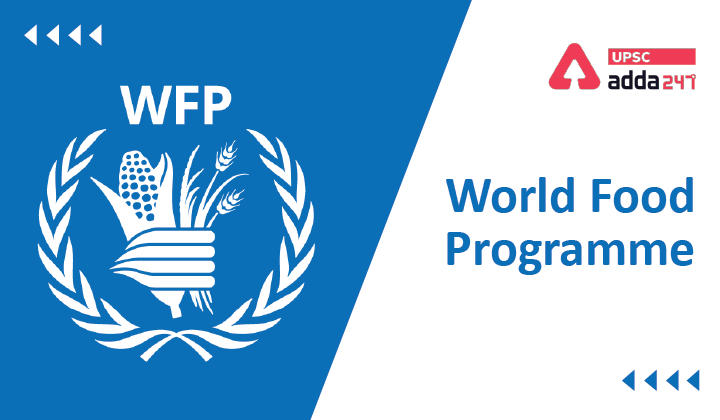Table of Contents
World Food Programme: Relevance
- GS 2: Bilateral, regional and global groupings and agreements involving India and/or affecting India’s interests.
World Food Programme: Context
- India signed a Memorandum of Undertaking (MoU) with the United Nation’s World Food Programme (WFP) for the distribution of 50,000 MT of wheat that it has committed to sending Afghanistan as part of a humanitarian assistance.
India to Distribute Wheat to Afghanistan: Key points
- According to the MoU, the wheat will be taken through Pakistan to the Afghan border crossing and handed over to WFP officials in Kandahar beginning February 22 (after Punjab elections).
- The wheat will be divided into five batches of 10,000 MT, to be distributed across the country on approximately 200 trucks that are run by WFP.
India to Distribute Wheat to Afghanistan: Reasons for delay
- Pakistan’s Prime Minister Imran Khan had cleared an Indian proposal to use the land route in November 2021 and the Taliban regime had welcomed the offer, however the consignment could not move forward due to Pakistani officials who were adamant that Indian trucks would not be allowed to ply and only cleared Afghan trucks will be allowed to carry the wheat.
- More recently, the process has been delayed due to arrangements for Punjab elections in India, which were postponed from February 16 to February 20.
India Pakistan trade
- Pakistan had shut down all trade with India to protest the government’s changes in Jammu and Kashmir and Article 370 in August 2019.
- The route, however, could be opened only as an exception.
- Exemptions: The Pakistan Government had allowed Afghan exports to India to pass through the Wagah border, making an exception also for medicines from India during the pandemic.
- Also, India has also flown several consignments of medicines and medical equipment to hospitals in Afghanistan on board flights.
About WFP
- The World Food Programme is the food-assistance branch of the United Nations.
- It was founded by the Food and Agricultural Organisations (FAO) and the United Nations General Assembly (UNGA) in 1961.
- It is the world’s largest humanitarian organization, saving lives in emergencies and using food assistance to build a pathway to peace, stability and prosperity for people recovering from conflict, disasters and the impact of climate change.
- No institutional finance: WFP is completely funded through the generous voluntary contributions of donor governments, institutions, corporations and individuals.
- UN WFP headquarters: Rome, Italy.
- WFP has been awarded with the Noble Peace Prize 2020 for its efforts to combat hunger, bettering conditions for peace in conflict-affected areas and preventing the use of hunger as a weapon of war and conflict.
WFP Strategic Plan (2017-2021)
- The Strategic Plan (2017–2021) aligns WFP with the 2030 Agenda, focusing on ending hunger and contributing to revitalized global partnerships to implement the Sustainable Development Goals (SDGs).
- It sets out WFP’s vision to lift the most vulnerable and marginalized people out of hunger through all of us working together.
Also Read:





 TSPSC Group 1 Question Paper 2024, Downl...
TSPSC Group 1 Question Paper 2024, Downl...
 TSPSC Group 1 Answer key 2024 Out, Downl...
TSPSC Group 1 Answer key 2024 Out, Downl...
 UPSC Prelims 2024 Question Paper, Downlo...
UPSC Prelims 2024 Question Paper, Downlo...




